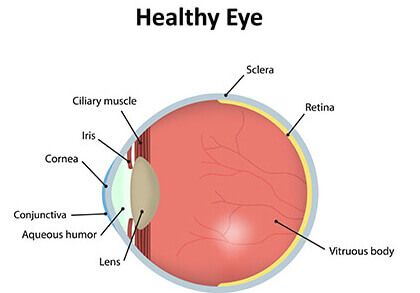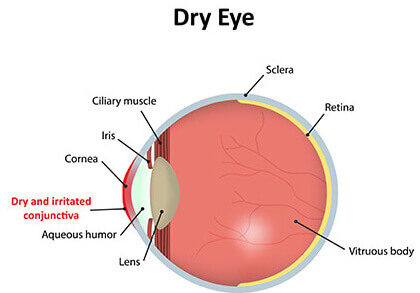Your eyes constantly produce tears at a slow and steady rate so that they stay moist and comfortable. Some people are not able to produce enough tears or the appropriate quality of tears to keep their eyes healthy or comfortable. This condition is known as dry eye.
Symptoms of dry eye include scratchiness, stinging, stringy mucus in or around the eyes, and blurry vision.
Sometimes people with dry eye will experience excess tearing. This is the eye’s response to the discomfort from dry eye. When the eyes get irritated, the gland that makes tears releases a larger than usual volume of tears, which overwhelm the tear drainage system. These excess tears then overflow from your eyes.

Dry eye often increases with age as tear production slows. For women, this is especially true after menopause. Dry eye can be associated with other problems like Sjögren’s syndrome , which can cause dry eyes along with dry mouth and arthritis.
Your eye doctor can usually diagnose dry eye by examining your eyes. Sometimes tests that measure tear production are necessary. The Schirmer tear test measures tear production by placing filter-paper strips between your eyeball and your lower lid. Your ophthalmologist might also test you for dry eye using diagnostic drops to check for patterns of dryness on the eye’s surface.


In less developed countries, dry eye due to a lack of vitamin A in the diet is not uncommon. Ointments with vitamin A can help dry eye caused by unusual conditions like Stevens-Johnson syndrome or pemphigoid.